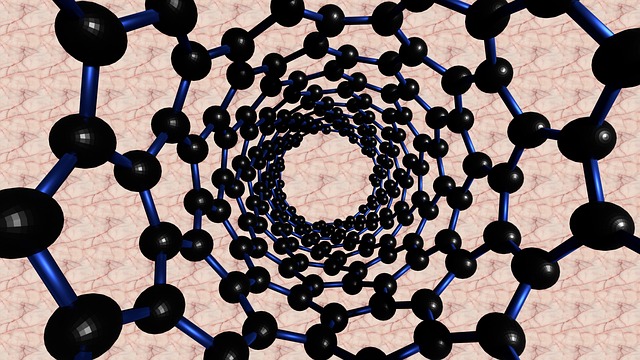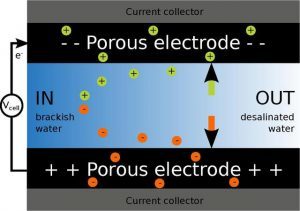Nanotechnology – primary driving force for future of global water sector
- September 23, 2018
- Posted by: administrator
- Category: Technology & Innovation, North America

David Smith, Corporate Strategy Director at global infrastructure design and delivery company Stantec, discusses the potential developments in nanotechnology have to transform the water sector.
David Smith: The last few years have seen nanotechnology evolve from a distant fantasy to a primary driving force of the future landscape of the water sector. It has the potential to disrupt the industry at every level across the globe – from water purification in the developing world, to large scale plants on our back door – and we should embrace and nurture its development.
Nanotechnology and the water sector are perfectly suited for each other. Operating on scales as small as 1/5000th of a red blood cell in diameter, the phenomenon has started to give us unprecedented capabilities that allow us to separate micro-organisms, pollutants and other unwanted matter from molecules of pure H2O like never before.
The likes of nanoparticles, nanofibers and zeolites are no new revelation in the commercial world. In fact, today, reverse osmosis desalination plants already rely on saltwater being pushed at high pressure through the minute pores of semipermeable membranes.
But membranes are just one area of the water industry in which nanotechnology is making waves. It has the potential to create significant shifts in increasing the supply of water, improving the efficiency of water use, and enable more effective water monitoring.
Too small to fail?
The possibilities of nanotechnology have certainly caught the attention of the US government. In 2016, the American National Nanotechnology Initiative launched ‘Water Sustainability through Nanotechnology: Nanoscale Solutions for a Global-Scale Challenge’. The Initiative recognises the promise nanotechnology has in solving the technical challenges of water supply and quality, and set three key objective areas which involve use of nanotechnology:
- increase water availability,
- improve the efficiency of water delivery,
- and enable next-generation water monitoring systems.
The water challenges faced in the USA are considerable. Demand is expected to rise by as much as 34% by 2060 and water use per capita in the US has been as much as 1.5 times the average of other industrialised nations. Increasing supply whilst curbing demand is a clear necessity – and that is not a problem peculiar to the United States.
The specific aims of each of the initiative’s areas speak volumes about what the applications of nanotechnology can achieve.
The American National Nanotechnology Initiative identified that, given the broad application for nanotechnology-enabled water treatment, it would be reasonable to target:
- halving the costs of filtration and membrane separation systems within five years;
- demonstrating nanotechnology-enabled alternatives to reverse osmosis for desalination within five years, and within ten years facilitating the transfer of these technologies to market;
- development of nanoscale catalysts for use in water treatment to completely replace metal-based catalysts within ten years
The initiative also sees the potential for nanotechnology to deliver significant increased efficiencies in water delivery and use. Clearly, there are gains to be made through nudging consumers into reducing their water use, and encouraging manufacturers to improve water-intense industrial processes. However, nanotechnology can play a significant role in cutting the energy needs for transporting and using water.
If these targets are achieved – and it is implicit in the Initiative’s aims that these objectives are reasonable and achievable – it would represent a truly enormous step forward for the practical use of nanotechnology in solving the global water challenge.

Applying nanotechnology to desalination
Taking a look at one specific part of the water industry in which nanotechnology is making progress – brine mining and desalination – shows its particular advantages. Investment and patent activity in both water-related nanotech and brine mining technology has accelerated greatly in recent times with the likes of high tech start-ups, utilities and major corporations identifying this opportunity and becoming actively involved in some of the most transformative elements of this relationship.
For example, NanoH2O, a company which produces nanoparticle and zeolite-based composite membranes for desalination emerged on investor’s radars as early as 2012. Impressively, NanoH2O claim the membranes can allow up to a 20 percent reduction in energy consumption and up to a 70 percent increase in water production over similar sized state-of-the-art reverse osmosis membranes.
This being said, benefits of this advancement do not solely have to be felt by large water companies. The commercial benefits to these rapid developments in nanotech are clear, but if embraced by our sector such breakthroughs can trickle down to the home market. Liquidity, a California based start-up, has developed a low cost, small scale nano-filter with the ambition to bring the same technology to the everyday consumer. It will help provide a supply of safe drinking water for a growing population, and address critical issues in medicine, energy, and agriculture.
Quicker to market
Beyond its potentially transformative impact on the water industry, nanotechnologies have another another important feature: they are developing faster than usual for early stage technology, which in the past has typically been characterised by long cycles between invention and commercialisation. By some estimates – and certainly going by the aims of the American National Nanotechnology Institute – they have the potential to be market-ready in less than five years.
This is due in part to the recent growth in research and development investment in water applications, drawing on experience and sharing intelligence with other sectors. Like never before, the water sector is learning from technological advancement in other industries.
Water sector newcomer graphene, for example, has been a hotbed of R&D in aerospace, semi-conductors and consumer electronics technologies for several years now.
Furthermore, each of these technologies are amongst the safest in the sector. They have unique natural attributes that should raise fewer regulatory barriers as they form either an integral part of a composite material, do not remain in a solution indefinitely, or are inherently short lived.
This contributes to the quickening speed in which new nanotechnologies are developing from R&D to commercial use – one of the most exciting features of the modern water sector.
The water crisis our planet faces is something nobody can ignore, and when considered against forecast global shortages, the accelerated development timescales of these applications will undoubtedly become particularly important.
Where next?
After the initial hype, sustained investment activity and invention of novel water-related applications suggest that this rapidly growing field could become integral to the future of our industry, if it isn’t integral already.
It is likely that we will soon see the emergence of corporate venture capital models in the water industry, as utilities and the businesses that serve them compete to find big ideas and fund radical invention to improve efficiency and performance.
Nanotechnology will remain, for some time, a high priority target.
Click here to download the whitepaper Nanotechnology Signature Initiative Water Sustainability through Nanotechnology: Nanoscale Solutions for a Global-Scale Challenge
